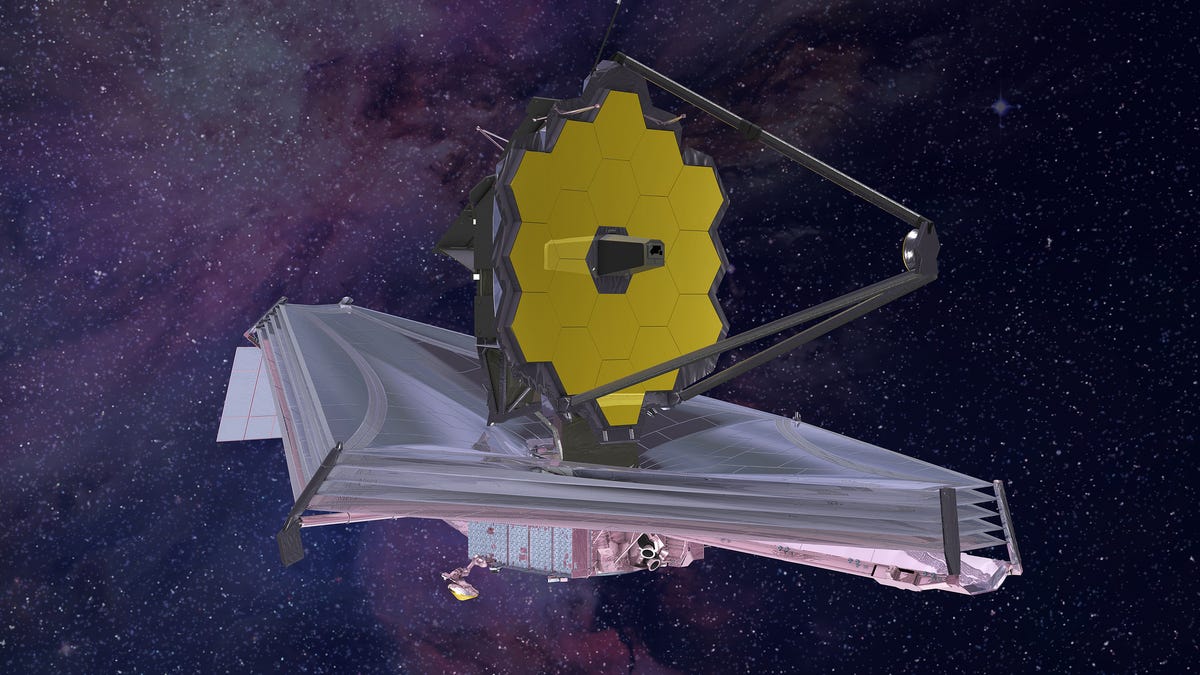See an asteroid photobomb James Webb as the telescope zips through space
Oh look, Webb is making friends already.

This artist's concept shows the James Webb Space Telescope.
The James Webb Space Telescope is currently in a period of self-discovery as it travels through space and unfolds various parts, like its massive sunshield. The University of Hertfordshire's Bayfordbury Observatory peered into the distance to track Webb during this critical time, and it caught sight of more than just the telescope.
"NASA Webb speeding through the skies last night," the observatory tweeted on Thursday along with a view of the telescope moving as a bright dot against a backdrop of stars.
@NASAWebb speeding through the skies last night.#JWST pic.twitter.com/hjCet0sCpB
— University of Hertfordshire Observatory (@BayfordburyObs) January 6, 2022
The university observatory pointed out another, fainter object moving along below and in roughly the same direction as Webb in the field of view. That's asteroid (35452) 1998 DF10.
A wider view in a video shows yet another bonus asteroid -- (97743) 2000 HQ42 -- in the upper right corner. You may have to watch it a couple of times to spot both asteroids, but the telescope itself is easy to see.
Webb seems to dim and brighten as it moves across the sky, which may be due to reflections from its very shiny tennis-court-size sunshield.
The telescope has some more acrobatics ahead before it's fully and successfully deployed. If it makes it through that process, it will begin its mission to peer into the early universe. As the Bayfordbury Observatory's video shows, Webb may be far away already, but it's not alone out there in space.

